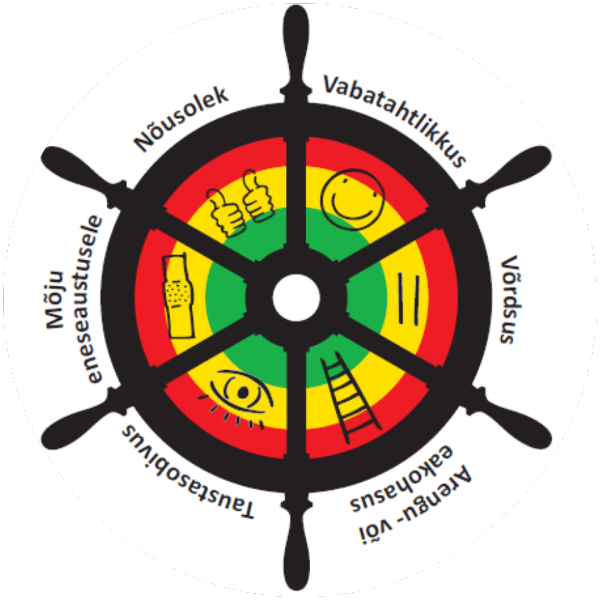- All participants
- Sotsiaalkindlustusamet

Sotsiaalkindlustusamet
Theflagging system is a method for professionals working with children and young people (0-18 years) to assess what sexual behaviour is acceptable and what is not, and to respond if necessary. The flag system uses six assessment criteria, four flags (green, yellow, red and black), a progress chart, response guidelines and illustrated example situations. The flag system also teaches how to respond to sexual behaviour. The use of the method prevents sexual violence by giving children and adults a common language to discuss sexuality and sexual behaviour. The flag system is also suitable for use in cases involving children and young people with special needs.
See also
Child and Adolescent Sexual Behaviour Risk Assessment Training (Flag System)


Flagsystem training
Purpose of the flag system
The aim of the flag scheme is to support the natural and safe sexual development of children and young people and to prevent sexual violence. Sexual behaviour that crosses boundaries can range from sexually harassing comments and advances to various forms of sexual violence and exploitation. Such behaviour can occur between children themselves or between children and adults.
The flagship scheme helps professionals to support and provide support for children and young people to develop sexual integrity - which means awareness, respect and responsibility for their own and others' sexuality. It means, among other things, that a child is able to make decisions about his or her own bodily integrity - what approaches he or she will and will not allow; a child acquires the attitude that no one should be forced to do anything he or she does not want to do with his or her own body. It is also about being able to set boundaries for oneself and others, and to respect society's values and norms about sexuality.
The flag system uses six assessment criteria, four flags (green, yellow, red and black), a development chart, response guidelines and a drawn example situation



















